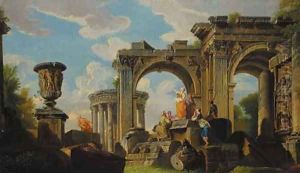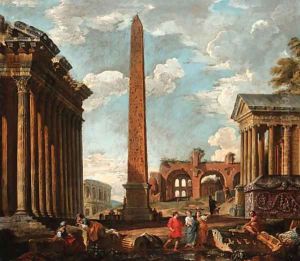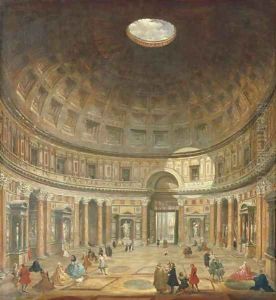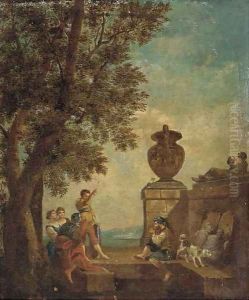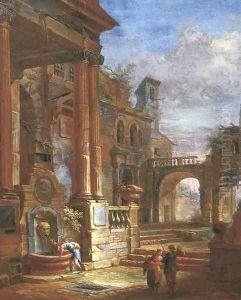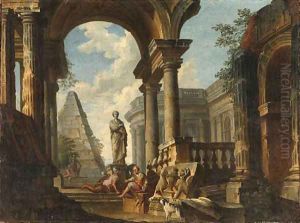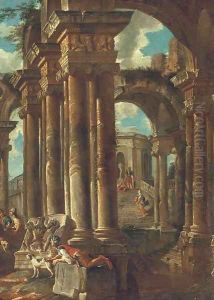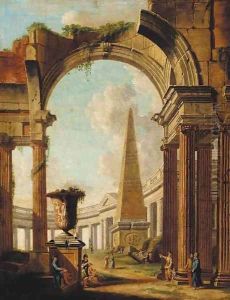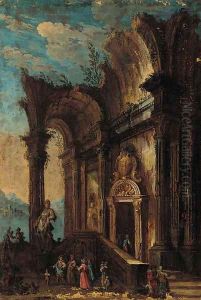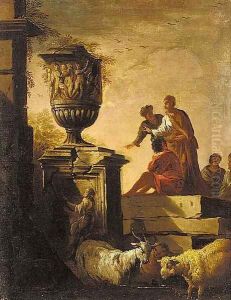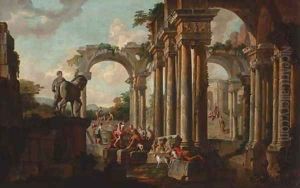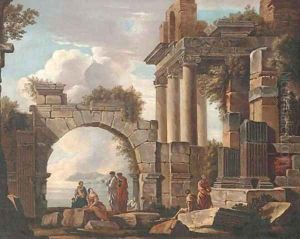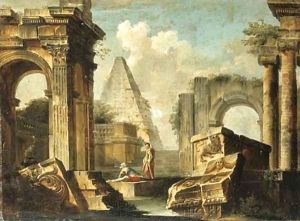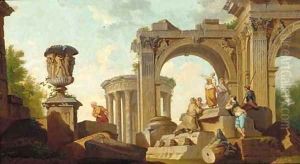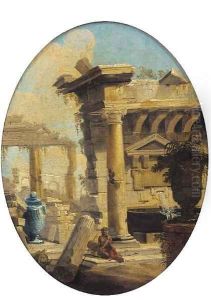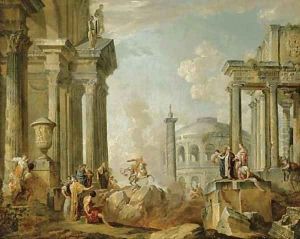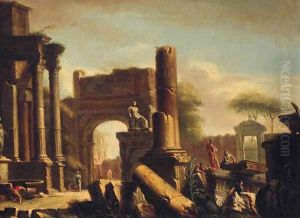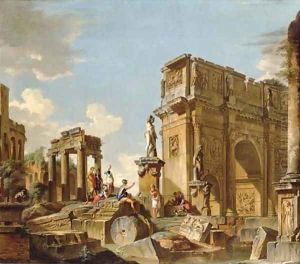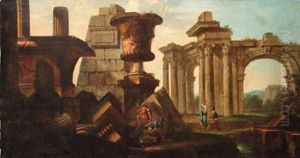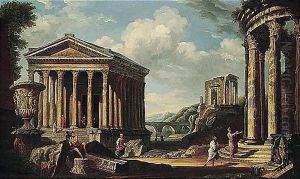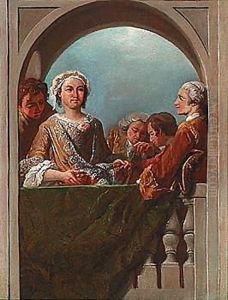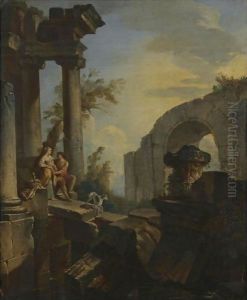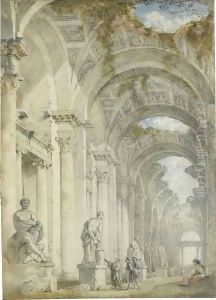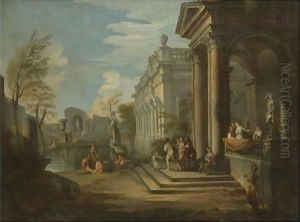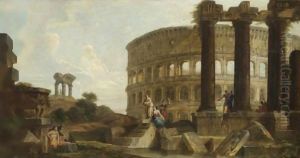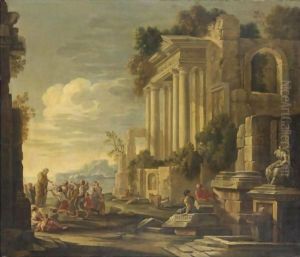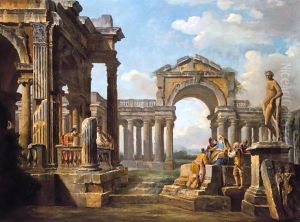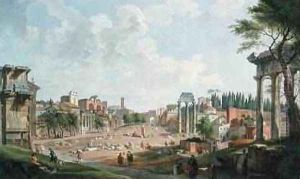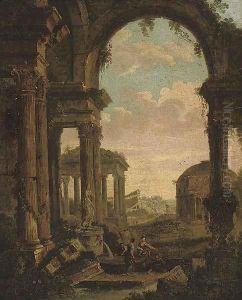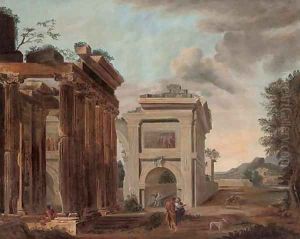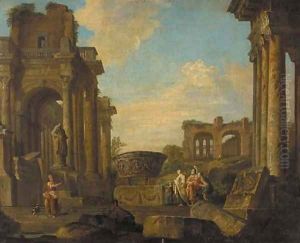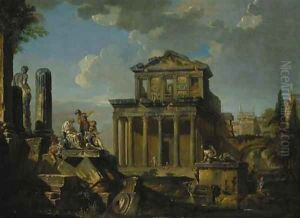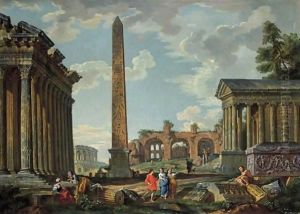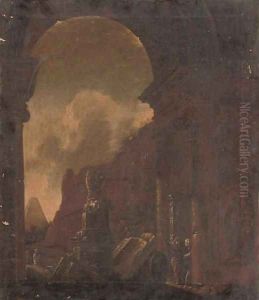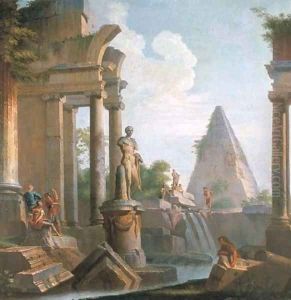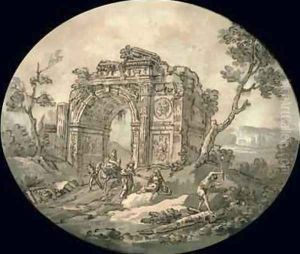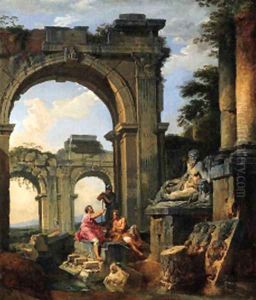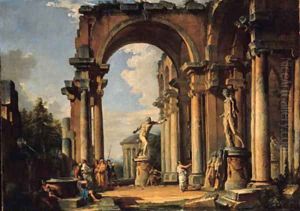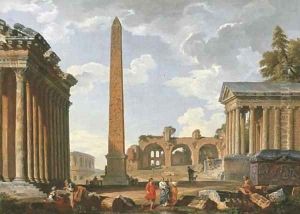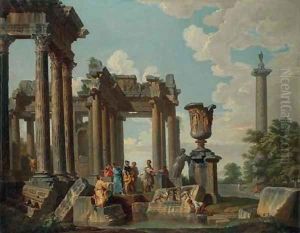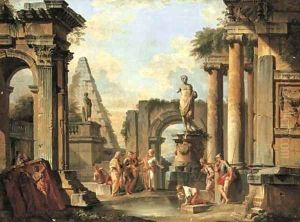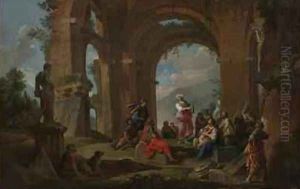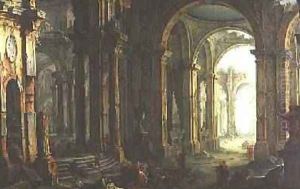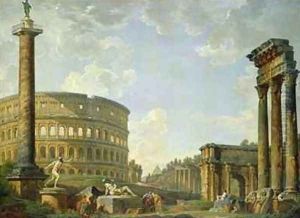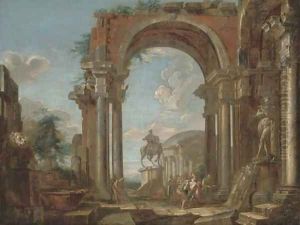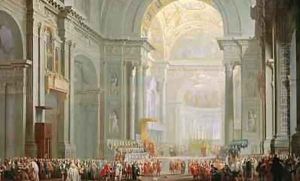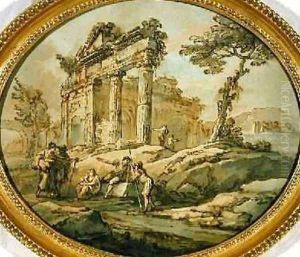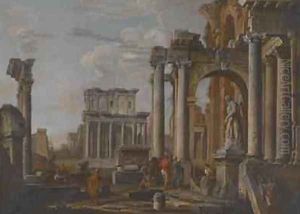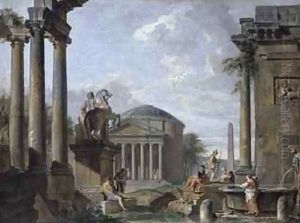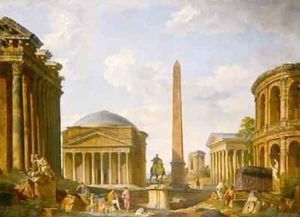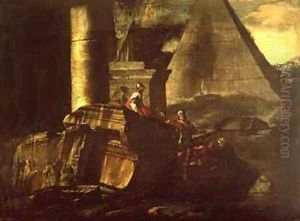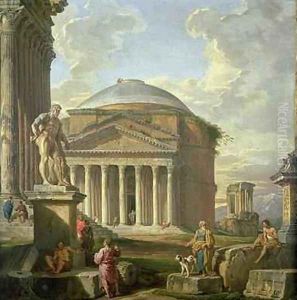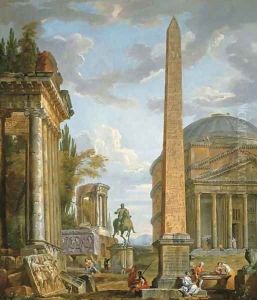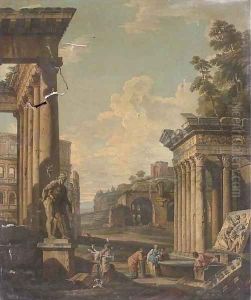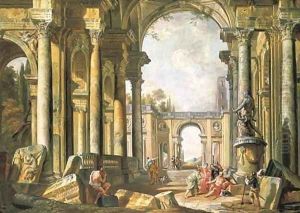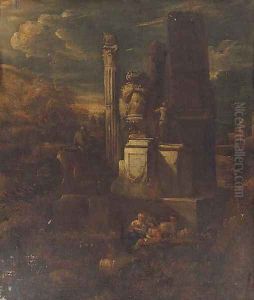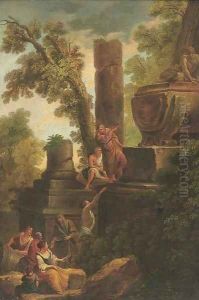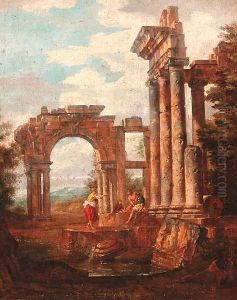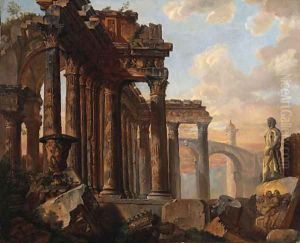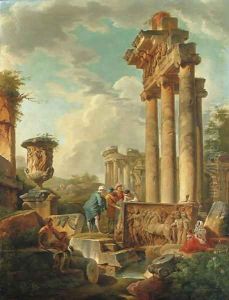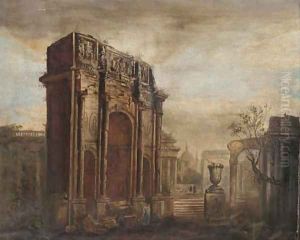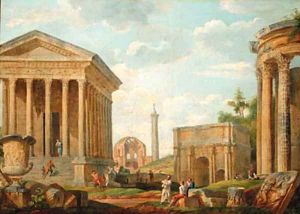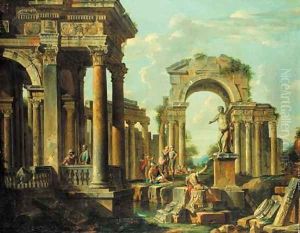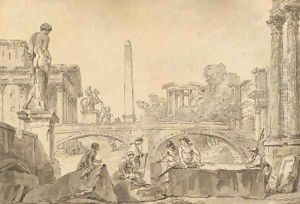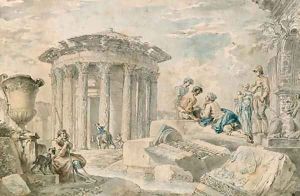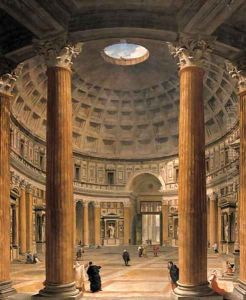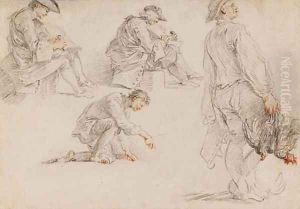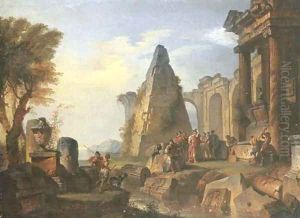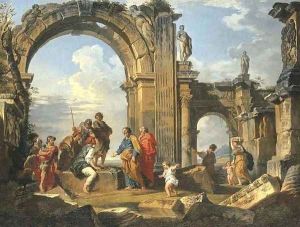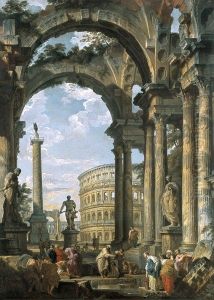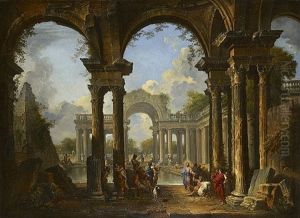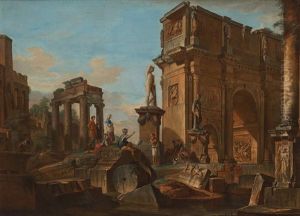Giovanni Paolo Panini Paintings
Giovanni Paolo Panini, also known as Gian Paolo Panini, was an Italian painter and architect who is best known for his vedute, or views of Rome, capturing the classical and contemporary architecture of the city with great detail and accuracy. Born in Piacenza in 1691, Panini showed an early talent for drawing and perspective, which led to his move to Rome in 1711, where he would make a significant impact on the art of veduta.
In Rome, Panini became a successful painter, earning commissions from aristocrats and royalty. He was particularly favored by the French visitors and the ambassador to the Vatican, for whom he created many works depicting the grandeur of Rome's antiquities and the festivities of the time. His paintings often included the ruins of ancient Rome and the modern buildings and events of the 18th century. He was adept at incorporating these elements into expansive and detailed compositions that were both accurate and pleasing to the eye.
Panini's works are characterized by their precise architectural details, mastery of perspective, and skillful use of light and shadow, which gave depth to his scenes and highlighted the magnificence of Rome's urban landscape. He is considered one of the most important artists of the vedute genre, and his works influenced many other artists, including Canaletto and Francesco Guardi, who followed his approach to capturing cityscapes.
In addition to his vedute, Panini also painted gallery pictures, which are imaginative interiors displaying collections of paintings and sculptures. These works often served as a form of visual inventory for art collectors, showcasing their wealth and taste in art. Panini’s gallery pictures are notable for their intricate composition and the way they cleverly play with perspective to include a large number of artworks within a single image.
Not only was Panini a prominent painter, but he also worked as an architect, though his architectural works have not survived to the same extent as his paintings. Among his architectural contributions, he is credited with designing the grand gallery of the Palazzo Doria Pamphilj in Rome.
Panini was also a teacher, and he held the position of a professor at the French Academy in Rome, where he instructed students in perspective and architectural painting. Through his teaching and his art, he had a lasting impact on the tradition of veduta painting, which continued to flourish even after his death in 1765.
Today, Giovanni Paolo Panini's paintings are held in high regard and can be found in major museums around the world. They serve as valuable historical records of Rome’s urban landscape during the 18th century and as masterful examples of the vedute style that contribute significantly to the understanding of European art history.
